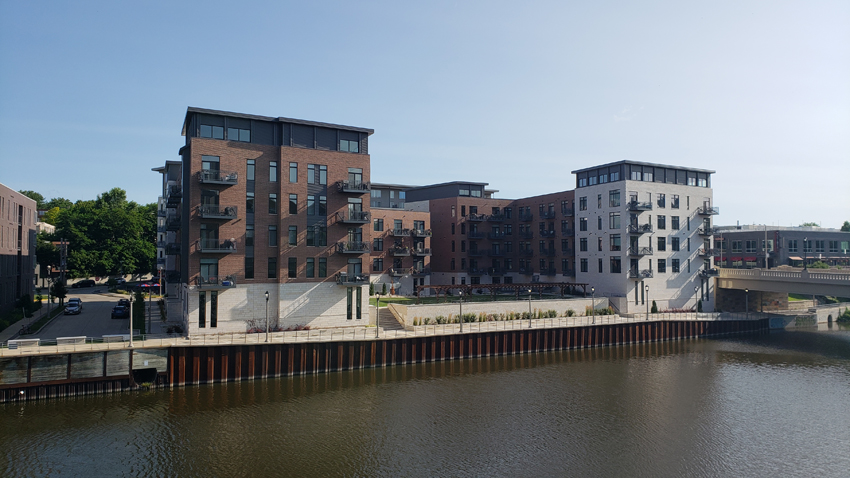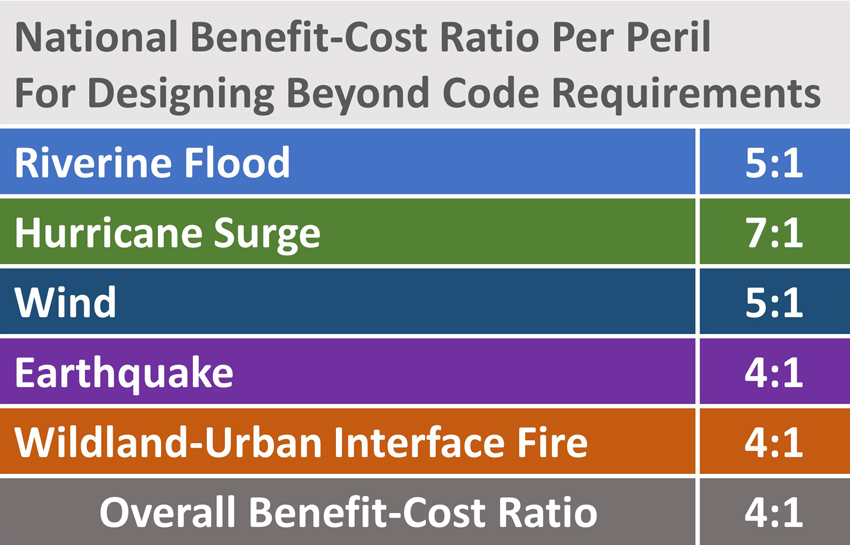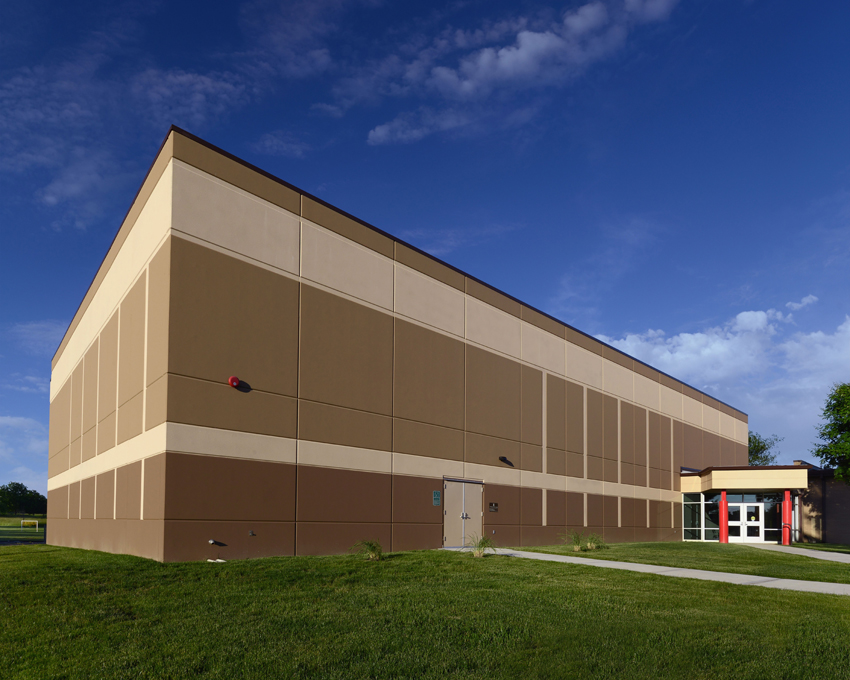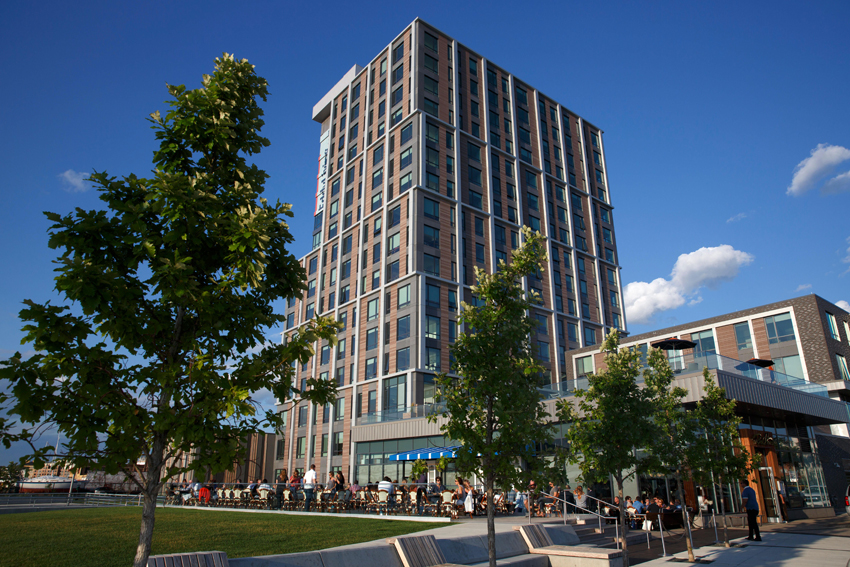Pathway to Resilience
Quantifying the Benefits of Resilient Construction
Building to a higher standard potentially adds cost, and for an owner to accept the higher initial cost, there must be convincing evidence of long-term savings. There are several studies that attempt to quantify the benefits of resilient construction.
Urban Land Institute (ULI)
In its report “Returns on Resilience: The Business Case,” the Urban Land Institute (ULI) explores the economic benefits of resilient construction. The report presents 10 detailed case studies that demonstrate cost savings from implementing resilient strategies. The study is based primarily on interviews with developers, property owners, and their consultants to identify motivations to protect assets against climate-related threats, what resilience strategies were selected, the design and development processes, and ultimately the projects’ performance. Hazards addressed included inland flooding, drought, hurricane wind, and storm surge. In all cases, the projects were able to demonstrate economic justification for spending more up front to design and build resilient structures.
NRMCA Insurance Cost Study
The National Ready Mixed Concrete Association (NRMCA) undertook a research study to understand if insurance companies offered lower insurance rates for structures built using noncombustible materials for both builder’s risk insurance and commercial property insurance. One of the main drivers behind the study was the enormous loss in buildings each year due to structure fires.
Structure fires, whether caused by accident, arson, or wildfires, result in significant loss of life and property each year. Designing buildings using a balanced design approach—combining active and passive fire protection strategies—can help save lives and reduce property damage. According to a 2017 report titled “Total Cost of Fire in the United States” by the Fire Protection Research Foundation and the National Fire Protection Association (NFPA), the total cost of fires in 2014 was $328.5 billion, equaling 1.9 percent of the U.S. gross domestic product. The total cost of fire is divided into categories of expenditures and losses. The expenditures—items such as fire department budgets, fire-protection devices, and equipment—constitute $273.1 billion (83.1 percent of total) and the losses constitute $55.4 billion (16.9 percent of total).

Photo courtesy of NRMCA
Figure 9: Bedford Development used concrete walls built using insulating concrete forms (ICFs) for Walker’s Landing located in Milwaukee, Wisconsin, for fire resistance, among other benefits.
According to NFPA, there were 481,500 structure fires in 2019, causing 2,980 civilian deaths, 13,900 civilian injuries, and $12.3 billion in damages. NFPA estimates that 264,500 fires occurred in homes, resulting in 2,390 deaths, 8,800 injuries, and $6.4 billion in damages, and 75,000 occurred in apartment buildings, resulting in 380 deaths, 3,400 injuries, and $1.3 billion in damages. Property damages from fires have been increasing over time.
The NRMCA study titled “Survey of Insurance Costs for Multifamily Buildings” revealed that insurers are aware of the risks of building with combustible construction and the benefits of building with noncombustible construction. In summary, builder’s risk insurance is 22–72 percent less for noncombustible construction, depending on location. Commercial property insurance is 14–65 less for noncombustible construction, also depending on location. According to the study, some agents suggested that the gap between rates for wood frame and concrete is likely to grow in the future and that a growing number of insurers are declining to serve as sole insurer for wood-frame apartment buildings. Additionally, insurers of such buildings are increasingly requiring that the insured take extra measures to protect against fire loss.

Image: National Institute of Building Sciences
Figure 10: The national cost-benefit by hazard when building beyond 2015 IBC requirements.











